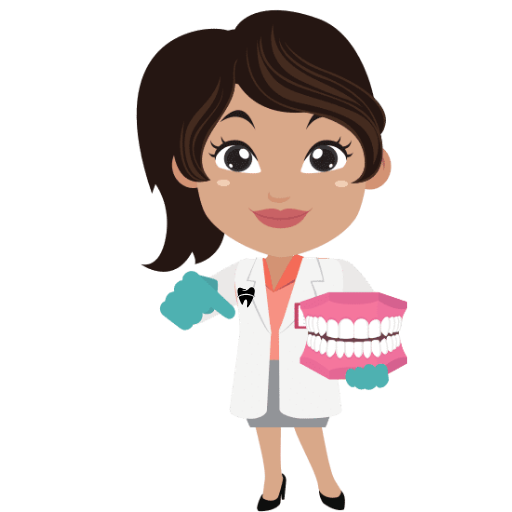Living with TMJ disorder can be challenging, but it’s even more complex when bruxism comes into play. Discover how to tackle these issues together.
1. Understanding the Connection: Exploring the Link between Bruxism and TMJ
Bruxism, commonly known as teeth grinding, and TMJ (temporomandibular joint) disorder are two closely related conditions that often go hand in hand. Understanding the connection between these two is essential in managing and treating the symptoms effectively.
Here are some key points to explore the link between bruxism and TMJ:
- Shared symptoms: Both bruxism and TMJ disorder can present similar symptoms, such as jaw pain, headaches, and difficulty in opening or closing the mouth.
- Cause and effect: Bruxism can lead to the development or worsening of TMJ disorder. The continuous grinding of teeth puts excessive strain on the jaw joint, leading to inflammation and dysfunction.
- Contributing factors: Stress and anxiety are commonly associated with both bruxism and TMJ disorder. Other factors like misaligned teeth, malocclusion, and certain medications can also contribute to the development of these conditions.
- Treatment approaches: Addressing bruxism can help alleviate TMJ symptoms. Treatment options may include wearing a nightguard to protect teeth from grinding, stress management techniques, physical therapy exercises, and in severe cases, surgery may be considered.
By understanding the connection between bruxism and TMJ disorder, individuals can seek appropriate interventions and adopt preventive measures to minimize discomfort and improve overall oral health.
2. Unveiling the Culprit: The Mechanics behind Bruxism and its Impact on TMJ
In order to understand the mechanics behind bruxism and its impact on the temporomandibular joint (TMJ), it is important to first have a clear understanding of what bruxism is. Bruxism refers to the involuntary grinding, clenching, or gnashing of teeth, most commonly occurring during sleep. While occasional teeth grinding is normal, chronic bruxism can have detrimental effects on the TMJ and overall oral health.
Bruxism has been linked to various factors including stress, anxiety, and abnormal alignment of the teeth and jaw. When an individual grinds or clenches their teeth, excessive forces are exerted on the TMJ, which connects the jawbone to the skull. Over time, this repetitive pressure can lead to inflammation, muscle strain, and the wearing down of the teeth.
The impact of bruxism on the TMJ can result in a range of symptoms, including jaw pain, headaches, earaches, and difficulty opening or closing the mouth. If left untreated, bruxism can also cause further complications such as tooth sensitivity, tooth loss, and even changes in facial structure. Seeking professional help is crucial in order to diagnose and manage bruxism effectively.
- Stress and anxiety are common triggers for bruxism.
- Abnormal alignment of the teeth and jaw can contribute to bruxism.
- Repetitive pressure on the TMJ from bruxism can lead to inflammation and muscle strain.
- Untreated bruxism can result in a range of symptoms and complications affecting oral health.
To protect the TMJ and prevent further damage, various treatment options are available. These may include the use of dental splints or mouthguards to cushion the impact of grinding, stress management techniques to alleviate triggers, and orthodontic interventions to correct misaligned teeth. Early detection and intervention can help mitigate the impact of bruxism on the TMJ, promoting oral health and overall well-being.
3. Signs and Symptoms: Identifying the Telltale Signs of TMJ Troubles and Bruxism
TMJ troubles and bruxism can cause significant discomfort and impact your oral health. Identifying the signs and symptoms of these conditions is crucial for timely treatment and relief. Here are some key indicators to watch out for:
- Jaw pain and tenderness: TMJ disorders often lead to pain or tenderness in the jaw joint and surrounding muscles. If you experience discomfort while chewing or opening your mouth wide, it could be a sign of TMJ problems.
- Facial pain: Bruxism, or teeth grinding, can result in facial pain, particularly in the cheeks or temples. This may be accompanied by headaches or earaches.
- Clicking or popping sounds: A clicking or popping sound when you open or close your jaw may indicate a TMJ disorder. This could be due to a misaligned jaw joint or a damaged disc within the joint.
- Teeth grinding or clenching: Bruxism often manifests as teeth grinding or clenching, especially during sleep. If you wake up with a sore jaw or notice flattened, chipped, or worn-down teeth, it’s important to consider a bruxism diagnosis.
If you experience any of these symptoms, it’s crucial to consult a dental professional for an accurate diagnosis and appropriate treatment options. Early identification and intervention can help alleviate the discomfort caused by TMJ problems and bruxism, and prevent further damage to your dental health.
4. The Vicious Cycle: How Bruxism Aggravates TMJ and Vice Versa
Bruxism, or teeth grinding, and TMJ, or temporomandibular joint disorder, are two common dental conditions that often go hand in hand. The nature of their interaction creates a vicious cycle, where one condition aggravates the other, leading to increased pain and discomfort.
Here’s how the vicious cycle unfolds:
1. Bruxism contributes to TMJ: Persistent teeth grinding exerts excessive pressure on the jaw joint, placing strain on the muscles, ligaments, and bones involved in jaw movement. This constant force can gradually lead to the development or worsening of TMJ symptoms, such as jaw pain, clicking or popping sounds, and limited jaw mobility.
2. TMJ exacerbates bruxism: On the flip side, TMJ-related pain and discomfort can trigger or worsen bruxism. Individuals with TMJ often unconsciously grind their teeth as a way to alleviate discomfort or find temporary relief. Unfortunately, this unintentional grinding further damages the already stressed jaw joint, perpetuating the cycle.
Breaking this cycle requires comprehensive treatment that addresses both bruxism and TMJ. Dentists may recommend the following steps:
– Wearing a custom-made mouthguard: A mouthguard acts as a protective barrier, reducing the effects of bruxism on the jaw joint and preventing further damage. It also helps alleviate TMJ symptoms by redistributing the forces exerted on the joint during grinding.
– Stress management techniques: As stress is a common trigger for both bruxism and TMJ, learning stress management techniques like meditation, deep breathing exercises, or counseling can be beneficial in controlling both conditions.
By understanding how bruxism and TMJ aggravate each other, individuals can seek appropriate dental care and take necessary steps to break the vicious cycle. Consultation with a professional dentist is crucial to determine the best treatment plan tailored to one’s specific needs and ultimately find relief from the pain and discomfort associated with both conditions.
5. Managing Bruxism: Effective Strategies to Alleviate Tooth Grinding and Its Impact on TMJ
Effective Strategies to Alleviate Tooth Grinding and Its Impact on TMJ
Bruxism, commonly known as tooth grinding, can lead to various complications, including temporomandibular joint (TMJ) disorder. Luckily, there are several effective strategies to manage bruxism and minimize its impact on your TMJ. By implementing these practices, you can find relief from discomfort and protect your dental health.
To effectively manage bruxism and reduce its impact on your TMJ, consider the following tips:
- Wear a nightguard: Nightguards act as a protective barrier, preventing your teeth from grinding against each other during sleep. These custom-fitted devices are designed to alleviate pressure on the TMJ and minimize damage to your teeth.
- Practice stress reduction techniques: Since stress is often a major contributor to bruxism, incorporating stress reduction techniques into your daily routine can be highly beneficial. Engage in activities such as yoga, meditation, or deep breathing exercises to help manage stress levels and reduce grinding.
- Avoid stimulating substances: Some substances, such as caffeine and alcohol, can exacerbate bruxism. Limit your intake of these substances, particularly in the evening, to help alleviate tooth grinding.
- Practice good sleep hygiene: Establishing a consistent sleep routine can help reduce the likelihood of bruxism. Ensure you are getting enough sleep each night, create a calm sleeping environment, and eliminate distractions to promote better sleep quality.
- Evaluate medications: Certain medications can contribute to tooth grinding. Consult with your healthcare provider to discuss alternative options or adjustments to your current medication regimen if it may be causing or worsening bruxism.
By incorporating these effective strategies into your daily routine, you can manage bruxism and alleviate its impact on your TMJ. Remember, it’s important to consult with your dentist or healthcare provider for personalized advice and treatment options that best suit your individual needs.
6. TMJ Treatment Options: Navigating the Path towards Relief from Bruxism-related TMJ Issues
Suffering from bruxism-related TMJ issues can be a real burden, causing discomfort and affecting your overall well-being. Thankfully, there are several effective treatment options available that can provide much-needed relief. Here, we will explore some of the most widely recommended approaches for managing TMJ issues caused by bruxism.
Night guards: Night guards are custom-made devices that are fit over your teeth to protect them from the damaging effects of grinding or clenching. These dental appliances not only provide an effective barrier, but they also promote muscle relaxation, reducing the strain on your temporomandibular joint.
Physical therapy: Physical therapy techniques can be highly beneficial for alleviating TMJ pain and improving jaw function. These may include exercises to strengthen the jaw muscles, massages to relieve muscle tension, and stretches to improve flexibility.
Stress management: As bruxism is often triggered by stress, finding effective ways to manage stress can significantly reduce TMJ symptoms. Engaging in activities such as yoga, meditation, or deep breathing exercises can help relax your mind and body, ultimately relieving tension in the jaw area.
7. Mind-Body Connection: Understanding the Psychological Factors at Play in TMJ and Bruxism
The mind-body connection plays a significant role in understanding the psychological factors involved in temporomandibular joint disorder (TMJ) and bruxism. While these conditions are commonly associated with physical factors such as dental misalignment or trauma, psychological factors can exacerbate or even trigger these conditions. It is important to recognize and address these psychological factors to effectively manage TMJ and bruxism.
Stress: One of the primary psychological factors that contribute to TMJ and bruxism is stress. When individuals are under stress, they have a tendency to clench their jaw or grind their teeth as a subconscious response. This repetitive jaw movement can lead to inflammation and pain in the temporomandibular joint, causing TMJ symptoms to worsen.
Emotional Distress: Emotional distress, such as anxiety or depression, can also play a significant role in TMJ and bruxism. Psychological conditions that impact an individual’s emotions and mood can result in increased muscle tension in the jaw and facial muscles, leading to jaw clenching and teeth grinding. Identifying and addressing these emotional factors can be crucial in effectively managing these conditions.
Cognitive Factors: Cognitive factors, including negative thought patterns, can also influence the development and exacerbation of TMJ and bruxism. Individuals with negative beliefs or thoughts about their dental health may develop heightened awareness and attention to their symptoms, leading to increased muscle tension in the jaw. Cognitive behavioral therapy and other techniques can help individuals reframe their thoughts and reduce the impact of cognitive factors on these conditions.
8. Seeking Professional Help: How Dental and Medical Experts Can Assist in Tackling TMJ and Bruxism
When dealing with TMJ (temporomandibular joint) disorders and bruxism (teeth grinding), seeking professional help from dental and medical experts plays a vital role in finding effective solutions. These experts possess the knowledge and experience necessary to diagnose and treat these conditions, providing significant relief.
Here are some ways dental and medical professionals can assist in tackling TMJ and bruxism:
1. Accurate Diagnosis: Dental and medical experts have the expertise to accurately diagnose TMJ disorders and bruxism by thoroughly examining your symptoms, medical history, and conducting appropriate tests. They can differentiate between various underlying causes and determine the most suitable treatment plan for you.
2. Customized Treatment Options: Each individual’s condition is unique, and dental and medical professionals understand this. They can provide personalized treatment options tailored to your specific needs. This may involve a combination of approaches such as oral appliances, physical therapy, medication, stress management techniques, or even referral to specialists if necessary.
3. Continuous Monitoring and Follow-up: Dental and medical professionals play a crucial role in monitoring your progress and adjusting treatment plans accordingly. They can track changes, assess the effectiveness of prescribed therapies, and provide guidance on long-term management strategies. Following up with these experts ensures that you receive optimal care for your TMJ and bruxism concerns.
Remember, consulting with dental and medical experts is a crucial step towards finding relief from TMJ disorders and bruxism. Their professional knowledge, tailored treatments, and ongoing support can greatly improve your quality of life and alleviate the discomfort associated with these conditions.
9. Lifestyle Modifications: Adopting Healthy Habits to Ease TMJ Troubles and Bruxism
In order to ease TMJ troubles and bruxism, adopting healthy lifestyle habits can play a significant role. Here are some effective modifications that can help alleviate the symptoms and improve overall jaw health:
- Stress management: Since stress is often a trigger for TMJ troubles and bruxism, it is crucial to find healthy ways to manage stress levels. This can include regular exercise, practicing relaxation techniques such as deep breathing or meditation, and engaging in activities that bring joy and relaxation.
- Improving posture: Maintaining a proper posture can greatly reduce strain on the jaw and neck muscles. Be mindful of your posture throughout the day, especially when sitting or using electronic devices, and make a conscious effort to keep your head and neck aligned with your spine.
- Avoiding hard and chewy foods: Consuming foods that require excessive chewing can strain the jaw muscles and exacerbate TMJ troubles and bruxism. Opt for softer, easy-to-chew foods such as cooked vegetables, lean meats, and fish, and avoid chewing gum or biting into hard candies.
- Practicing jaw exercises: Regularly performing gentle jaw exercises can help strengthen the jaw muscles and improve jaw mobility. Consult with a healthcare professional or physical therapist to learn specific exercises that are suitable for your condition.
- Avoiding teeth clenching and grinding: Be conscious of any teeth clenching or grinding habits, particularly during times of stress or while sleeping. Wearing a nightguard prescribed by a dentist can provide a protective barrier between the upper and lower teeth, minimizing the effects of bruxism.
- Getting quality sleep: Poor sleep quality can contribute to increased muscle tension and exacerbation of TMJ troubles and bruxism. Establish a relaxing bedtime routine, create a comfortable sleep environment, and aim for consistent, adequate sleep to promote overall jaw health.
By adopting these lifestyle modifications and incorporating them into your daily routine, you can take proactive steps towards easing TMJ troubles and bruxism. However, it’s essential to consult with a healthcare professional or dentist for a comprehensive evaluation and personalized advice that suits your specific needs.
10. Long-term Solutions: Maintaining Oral Health and Preventing Recurrence of TMJ and Bruxism
When it comes to managing TMJ (temporomandibular joint) disorders and bruxism, a proactive long-term approach is key. By adopting healthy habits and taking preventive measures, you can effectively maintain oral health and minimize the likelihood of recurrence. Here are some effective strategies to consider:
- Stress management: Since stress is a common trigger for TMJ and bruxism, it is essential to find ways to manage stress effectively. Engaging in relaxation techniques, such as deep breathing exercises or practicing mindfulness, can help reduce tension in the jaw and prevent excessive clenching or grinding.
- Proper diet: Maintaining a balanced diet plays a significant role in preventing TMJ and bruxism. Avoid consuming hard or chewy foods that can strain the jaw muscles and opt for a softer diet instead. Additionally, reducing caffeine and alcohol intake can minimize muscle tension and improve sleep quality, which also contributes to oral health.
- Oral hygiene: Good oral hygiene practices are crucial for preventing dental issues that can worsen TMJ and bruxism. Follow a regular routine of brushing your teeth twice a day, flossing daily, and using mouthwash to keep your teeth and gums healthy. It is also advisable to visit your dentist for regular check-ups and cleanings to address any potential problems promptly.
- Custom mouthguards: If you are prone to teeth grinding or clenching, your dentist may suggest using a custom-fitted mouthguard. These devices provide cushioning and prevent further damage to your teeth and jaw joint during sleep or stressful situations. Using a mouthguard consistently can significantly reduce the intensity and frequency of TMJ and bruxism episodes.
- Physical therapy: Seeking the guidance of a physical therapist who specializes in TMJ disorders can be beneficial. They can recommend specific exercises and techniques to improve jaw mobility, strengthen jaw muscles, and alleviate pain. Physical therapy can address the root causes of TMJ and bruxism, helping prevent future recurrences.
By implementing these long-term solutions, you can take control of your oral health and reduce the impact of TMJ and bruxism on your daily life. Remember, consistency and persistence are vital in preventing recurrence, so be sure to incorporate these practices into your routine for lasting results.
In conclusion, navigating bruxism and TMJ can be challenging, but understanding the connection between the two is crucial. By seeking professional help, making lifestyle changes, and practicing relaxation techniques, you can manage and alleviate symptoms. Remember, early intervention is key in preventing long-term damage. Take control of your TMJ troubles and regain comfort in your daily life.





